A few years ago many of my friends were on the hunt for jobs. It was a pretty dismal landscape. When I graduated from college in 2010 unemployment, according to the Bureau of Labor Statistics (BLS), was at a high rate of 9.8%. This number has decreased and is now at 5.7, but the new issue I hear from my friends is that their salaries can barely support the cost of living in cities across the United States where the best jobs are located.
As someone who works in education, I wondered how will future generations combat this issue? How should we be preparing our students in schools across America to find good jobs that will support them and their future families? These questions led me to wonder what the best jobs of 2015 are, and where the trends are moving. According to CareerCast, who based their findings on “general categories that are inherent to every job: Environment, Income, Outlook, and Stress,” as well as pulling statistics from the BLS, found that the top 10 best jobs of 2015 are:
| Rank | Occupation | Median salary |
| 1 | Actuary | $94,209 |
| 2 | Audiologist | $71,133 |
| 3 | Mathematician | $102,182 |
| 4 | Statistician | $79,191 |
| 5 | Biomedical engineer | $89,165 |
| 6 | Data scientist | $124,149 |
| 7 | Dental hygienist | $71,102 |
| 8 | Software engineer | $93,113 |
| 9 | Occupational therapist | $77,114 |
| 10 | Computer systems analyst | $81,150 |
See a trend here? The top jobs lie in the fields of science, technology, engineering and math (STEM). In 2018 there will be an estimated 8.6 million jobs in the STEM workforce. As these statistics have emerged, a closer look at the landscape of who is getting these jobs has become a new hot-button issue, particularly in education. According to the National Science Foundation, 84% of professionals working in science and engineering jobs are white or Asian males. Women and minorities make up a low percentage of graduating college students in the field of engineering. According to the U.S. Census Bureau, there is a $15,900 annual salary gap between men and women in STEM-related jobs. This same wage gap exists between blacks and Hispanics employed in STEM jobs compared to their white counterparts. Additionally, Center for Talent Innovation research revealed that 45% of women are more likely to leave the science and technology industry as a result of a hostile work environment, with gender bias being the main issue.
Industry is now addressing these two big issues: equipping female and minority students with the knowledge and skills to get STEM-related jobs, and changing workplace culture to welcome women and minorities. STEM-related companies have known this for a while, yet an article in the U.S. News & World Report published on February 2015 indicated that the STEM workforce is no more diverse than in 2001. From an education standpoint, statistics from Change the Equation indicate that:
- 83% of students who took less than Algebra II in high school needed remedial math in college
- Women are more likely than men to switch out of STEM majors
- Only 30% of elementary school teachers feel well prepared to encourage girls to participate in science
- Novice teachers taught 23% of science classes at high-poverty schools, compared with 10% of science classes at low-poverty schools
- Nearly half (48%) of BA students who entered STEM fields between 2003-2009 had switched to non-STEM majors or dropped out by 2009
In short, our education system is inadequately providing our students, especially women and minorities, the knowledge and skills to get good 21st century jobs.
Last Friday I attended Silicon Valley Leadership Group’s Education Summit, where some of the top companies from STEM-related fields were in attendance. One of the panel sessions was Diversifying the STEM Pipeline. It featured Kimberly Bryant (Founder of Black Girls Code), Elizabeth Ames (VP at Anita Borg Institute), Lesley Slaton Brown (Senior Consultant at NACME), Diana Albarran Chicas (Co-founder at Latinas in STEM) and Mimi Fox Melton (Director of Programs at code2040). All of the speakers highlighted the importance and deep need for diversity at STEM-related companies. They all shared a vision for women and minorities to not be the ‘other’ when entering a STEM-related college classroom or workplace.
To prepare future generations to meet the needs of job demand in STEM fields, one step California has taken is to adopt new standards in math and science—the Common Core State Standards (CCSS) and the Next Generation Science Standards (NGSS) respectively. These new standards push students away from rote memorization and encourage them to do math and science via activity, critical thinking, and communication skills. To ensure that women and minorities are able to succeed with CCSS and NGSS— ultimately leading to STEM-related jobs— it is important that the goal of successful implementation be focused on the public school system. Of California’s 6.2 million public school students, 53% are Hispanic or Latino and 6% are African American. If public school students are able to achieve mastery of the new standards, the starting point of addressing issues of diversity in STEM-related jobs will have begun.
With this in mind, Ten Strands focuses on the public school system. Successful implementation of NGSS, for example, requires professional learning opportunities for teachers to help them effectively teach the new standards in their classroom. We know that using the environment as a context can be a powerful tool to help students understand the material being taught under these new standards. This summer, Ten Strands launched a pilot program in San Mateo providing professional development to teachers, focused on NGSS and using the environment as context. To read more about it check out my co-workers’ (Karen Cowe and Kim Moon) blog posts here and here. Using the environment as a context not only helps students relate to the science they are being taught, but it also prepares them for a new niche of STEM-related jobs that will be on the rise in the future: green jobs.
You’ve heard it in the news, you’ve heard it from the pope and it is a fact that 97% of scientists agree that climate change is happening. Leaders all over the world are taking steps towards reducing emissions and finding solutions to reverse trends. On April 29th 2015 Governor Brown issued an executive order that established “a California greenhouse gas reduction target of 40 percent below 1990 levels by 2030.” This ambitious goal will mean an increase in green jobs such as building and maintaining renewable energy sources. The BLS reported 3.4 million green jobs in the United States in 2011 and that number continues to grow. In 2008 Van Jones introduced the idea of a green-collar economy. “You can think about a green-collar job as a blue-collar job that’s been upgraded, or up-skilled, to better respect the environment,” says Jones. His organization Green For All works towards building an inclusive green economy strong enough to lift people out of poverty. This makes environmental literacy crucial for our students in the public school system. Employers in the future will be looking for students that understand the environment and have a passion for protecting it. Future scientists and engineers will have to tackle the big issues of climate change and young minds with innovative ideas will be working towards preserving the balance of our environment.
Implementing California’s new science standards using the environment as a context will prepare students to meet the new job demands of the 21st century. It is crucial that we equip our public school students with this knowledge so that they are able to support themselves adequately in the future and can work towards ensuring the sustainability of our natural world. We also have a responsibility to guarantee that the people taking on these new jobs are just as diverse as the population they serve. If we start now the path to a more sustainable and equitable society will be a possibility for the future.


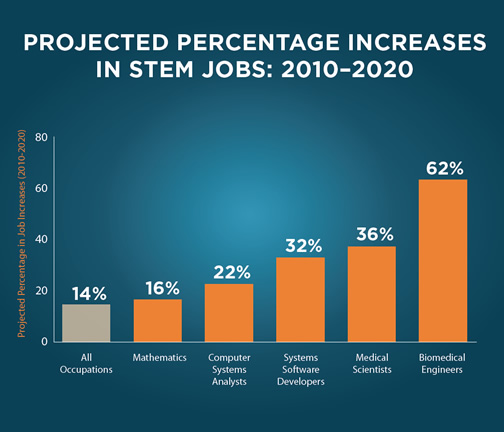
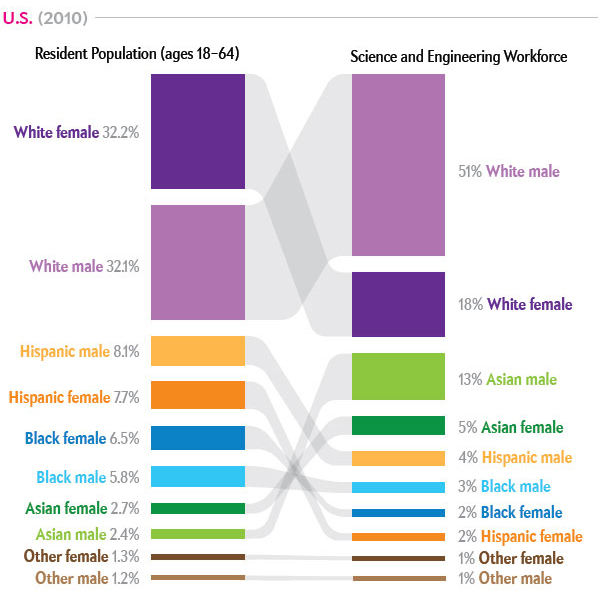
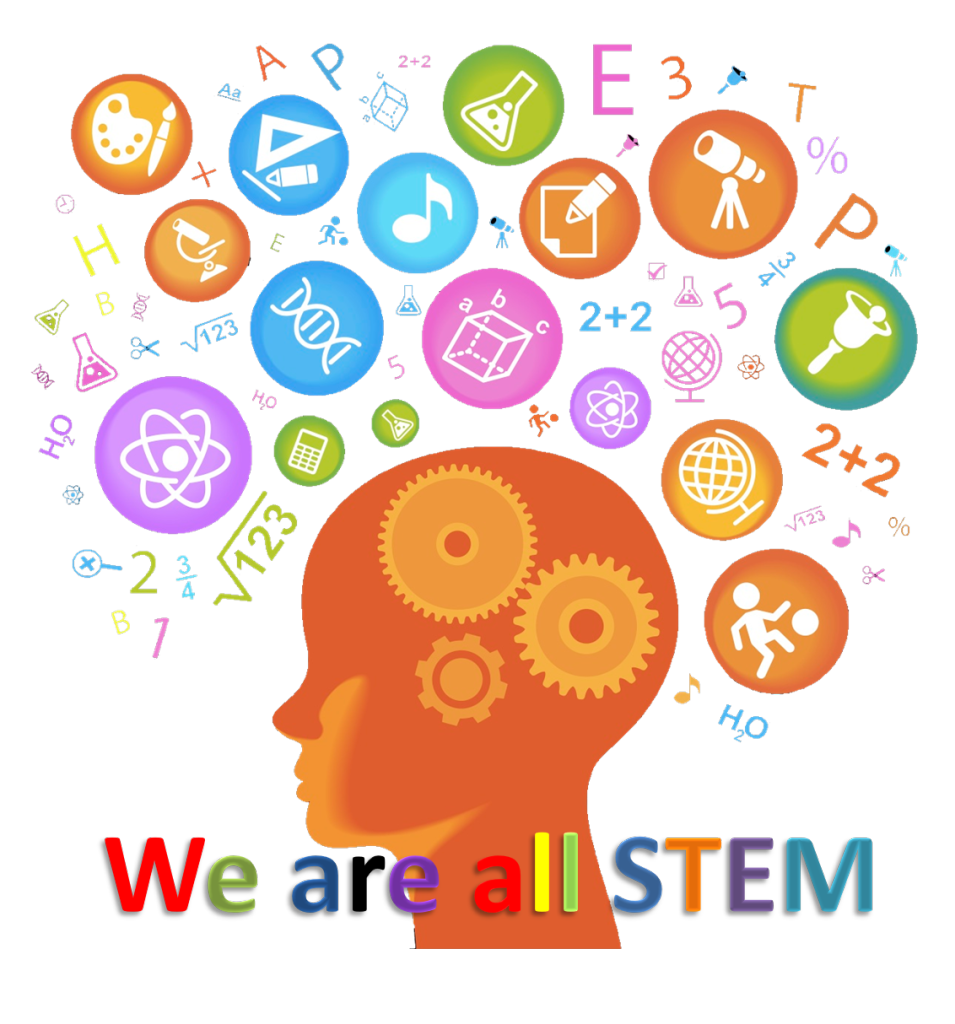

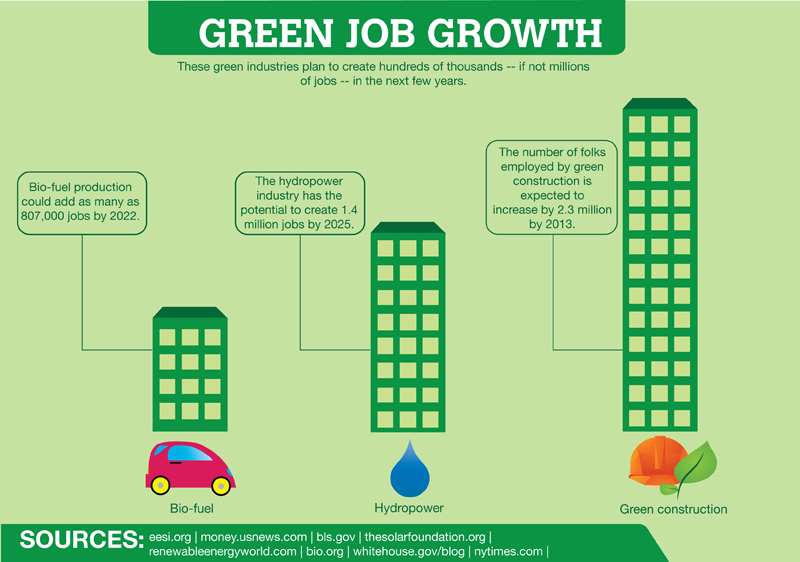
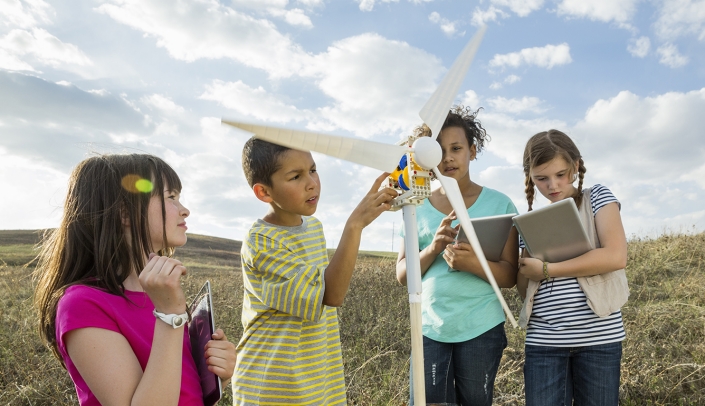

2 Responses
This is a great article, but could you cite your sources for all the stats? Unsubstantiated claims make a really well written article useless.
specifically the stats in the graphics that show the graph on project job increases and percentage of population vs. percentage in STEM workforce; that data in this latter graph don’t match what you have in the text. The graphic indicates that 64% are White or Asian male but in the text you say it’s 84%. I assume this is because it’s from different sources and years, but only one source is cited (NSF, no year given).